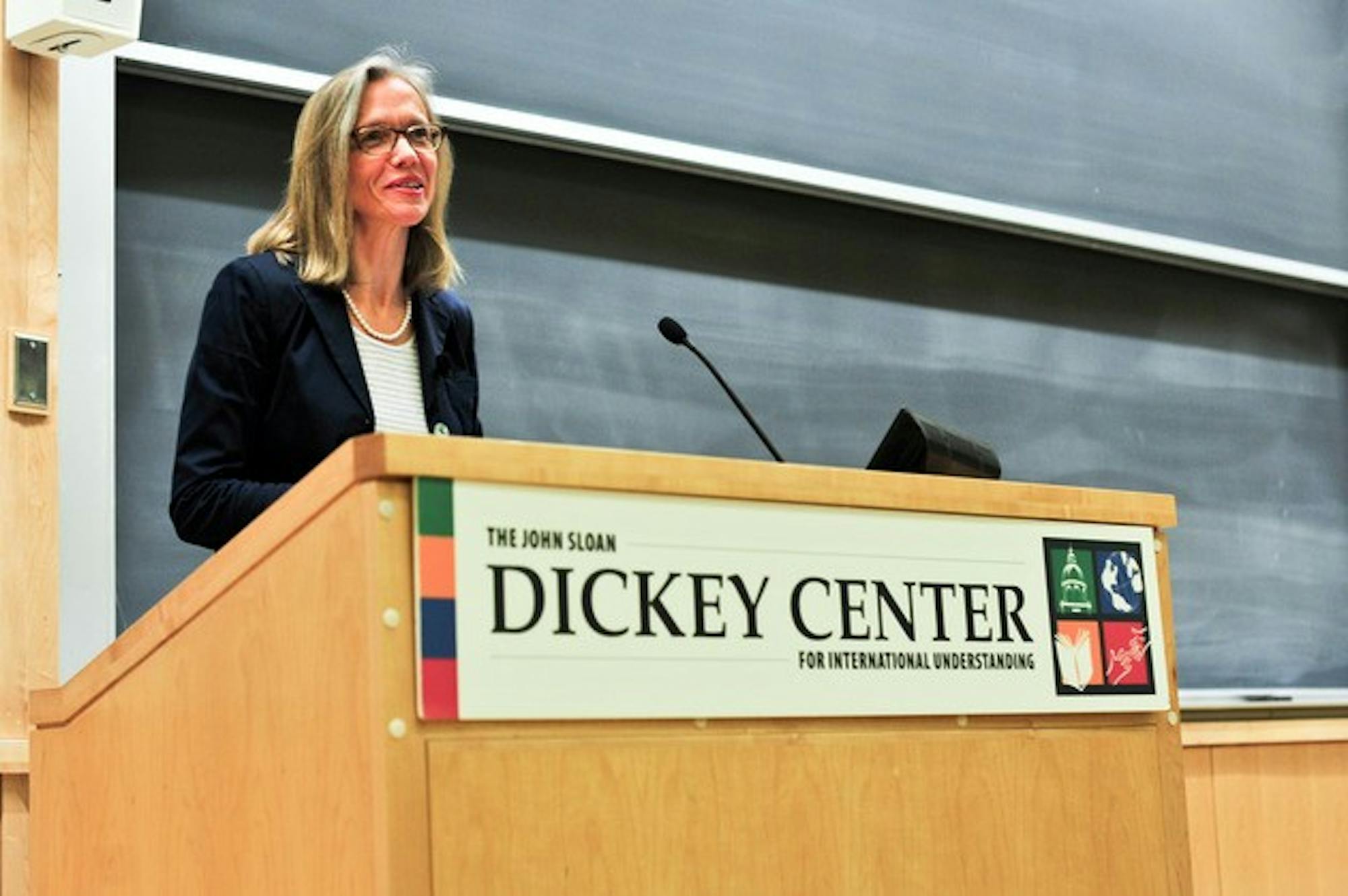"The liberal arts do liberate and encourage you to think widely and broadly and to try things that you never thought would come on your path," Westermann said to a crowd of about 50 attendees in Haldeman Hall on Thursday afternoon.
By "catering to every interest under the sun," from debating societies and literary clubs to student newspapers and social clubs, liberal arts institutions give students the opportunity to participate in activities they otherwise would not, Westermann said.
In fact, Westermann said she would never have become interested in a "frivolous subject" such as art history her primary area of study were it not for her liberal arts education at Williams College, Westermann said.
The romantic image of a liberal arts education also emphasizes the camaraderie that comes from the "shared, nuanced and indeed oppositional" understanding students receive from the liberal arts, Westermann said.
"The friendships born in such a community are the stronger for your efforts," Westermann said.
Although liberal arts institutions have experienced many changes over the past two decades including greater accessibility as a result of better financial aid and increased technology the essence of such an education remains the same, she said.
"Romanticism is fundamental to the liberal arts college," Westermann said. "It's in the DNA."
Nonetheless, current "reality checks" on the current state of the liberal arts must be acknowledged, Westermann said.
In the 1950s, 25 percent of higher education enrollment was in liberal arts institutions. By 1970, it was approximately 8 percent, and today only 2 to 3 percent of students are enrolled in liberal arts schools, she said.
The high cost of a liberal arts degree, fundraising problems, an increased emphasis on professional education and limitations on how fast liberal arts institutions can raise tuition all affect the prevalence of these schools. Because of these factors, Westermann said she predicts a continued downward demand for liberal arts degrees.
That schools are acknowledging the presence of these issues marks a step in the right direction for the liberal arts, Westermann said.
"Leading liberal arts colleges have begun to articulate responses to their long-term predicaments," Westermann said. "The effort itself is significant."
Like all institutions, liberal arts colleges are adapting to the spread of globalization, Westermann said.
Liberal arts campuses in the United States have started recruiting more students from foreign countries, focusing on global commitments and enhancing student access to study abroad programs, she said.
Paradoxically, just as the United States appears to be losing confidence in the liberal arts, the idea is "gaining traction abroad," Westermann said.
Both American entities operating abroad and foreign branches of schools based in the U.S. such as the New York University campus in Abu Dhabi where Westermann was provost are increasing in popularity, she said.
Despite globalization patterns, the scale of liberal arts institutions, especially their low student-to-faculty ratios and emphasis on financial aid, means such institutions will never be able to meet the demands of higher education worldwide, according to Westermann.
As a result, a liberal arts education will remain "an elite niche within a matrix of education," she said.
However, "elite need not mean elitist," and continuing to extend the liberal arts education to all who desire it is important in keeping the romantic image of the liberal arts alive, according to Westermann.
"We all need a little romance, even if from time to time it hurts," Westermann said.
Salman Rajput '14 said Westermann's lecture left him optimistic about the potential of a liberal arts education in a time of globalization.
"I think that hearing that the liberal arts experience and setup is desired by other countries that are also increasingly global sort of keeps the liberal arts education relevant when everyone is saying that it's no longer relevant in the global age," Rajput said.
The lecture "Liberal Arts Vision in a Global Age: Romance or Realism?" was part of the Dickey Center for International Understanding's 30th anniversary celebration, according to Christianne Wohlforth, the center's acting director. The event was sponsored by the Hopkins Center for the Arts, the Hood Museum of Art and the Leslie Center for the Humanities.




